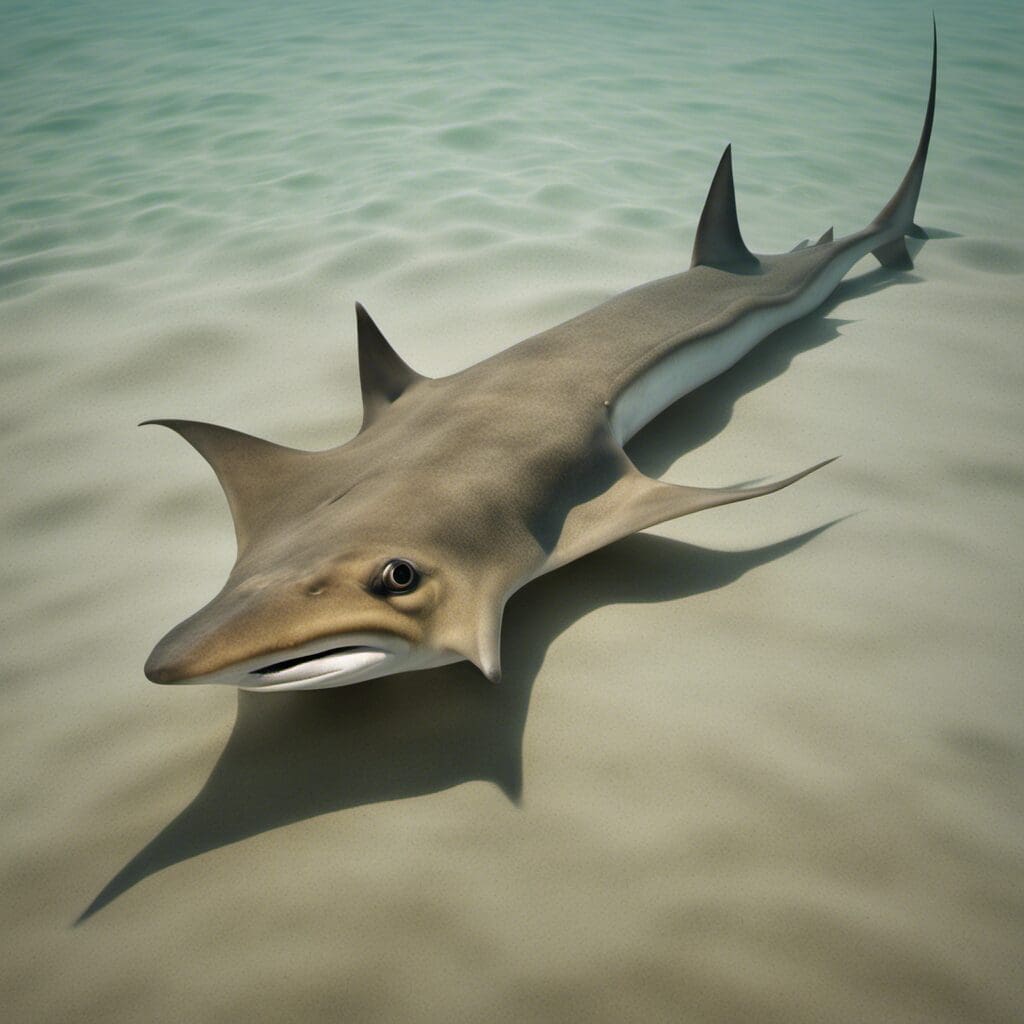Introduction
The Shovelnose Guitarfish, also known under its scientific name Rhinobatos productus, is a member of the Rhinobatidae family well-recognized for its odd shape that resembles both a shark and a ray.
Conservation Status
Currently, the Shovelnose Guitarfish is classified as “Near Threatened” according to the International Union for Conservation of Nature. Conservation efforts for this species are guided by the regulations set forth by the Pacific Fishery Management Council that require careful handling and immediate release of any caught guitarfish.
Statistics
| Statistic | Average | Range |
|---|---|---|
| Length | 120 cm | 91-152 cm |
| Weight | 18.1 kg | 9-27 kg |
| Lifespan | 11 years | N/A |
Distribution
The Shovelnose Guitarfish is widely distributed along the eastern Pacific Ocean from San Francisco, California to the Gulf of California in Mexico. The species does not exhibit any notable migration patterns.
Habitats
A favored residence of sandy or muddy bottoms in coastal waters, the Shovelnose Guitarfish prefers shallow waters with a depth range of 13-45 feet. No specific temperature range is known for this species.
When and Where to See
- Seasonal patterns: Most commonly seen in warmer months, March to October.
- Time of day: Generally more active during the night, but can be spotted throughout the day.
Best Fishing Locations
- Top Places: Santa Monica Bay, Malibu Lagoon State Beach, Doheny State Beach, Monterey Bay, Newport Pier, Crystal Pier, and San Diego Bay.
- General Tips: Look for sandy or muddy bottoms in coastal locations, especially in regions with a high population of benthic invertebrates, the guitarfish’s preferred food source.
How to Catch
- Preferred bait or lures: Crabs, Shrimps, or Squids.
- Fishing techniques: Bottom fishing or spearfishing.
- Best time: Throughout the warmer months and during night, when they are most active.
Identification Guide
Shovelnose Guitarfish have a flattened body shape with a pointed snout, similar to a guitar. They are greyish-brown to olive on top and white below. They are often confused with rays, but can be distinguished by the two dorsal fins and the caudal fin, which are characteristics of sharks.
Culinary
Guitarfish meat, known for its mild flavor and firm texture, can be used in a variety of dishes. Nutritional information and specific recipes are not readily available.
Additional Information
- Behavior: Shovelnose Guitarfish are bottom dwellers and feed on benthic invertebrates and small fishes.
- Predators and Threats: They have few natural predators, but are threatened by human activities such as coastal development, pollution, and fishing.
- Cultural/ Historical Significance: While there are no specific historical events or folklore associated with Shovelnose Guitarfish, they are admired for their peculiar appearance, earning them a symbolic place in artworks and pop culture.
References and Further Reading
For a comprehensive look at Shovelnose Guitarfish, consult detailed species-specific textbooks or trusted online resources. Always refer to accurate and reputable sources like scientific publications, marine biology databases, and government and educational institution websites. It’s also worth reminding that catching this species should be done ethically and in accordance with local fishing regulations.

